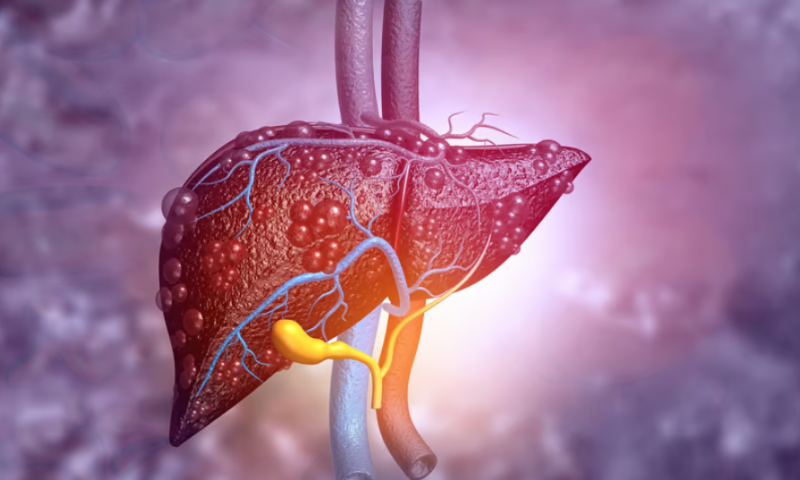Nonalcoholic steatohepatitis, or NASH, is a hot target in drug development. But NASH doesn’t happen out of nowhere—it’s the long-term consequence of nonalcoholic fatty liver disease (NAFLD). Despite being an earlier disease stage, there’s relatively little focus on developing NAFLD treatments compared to NASH therapies, largely because there are no reliable models for understanding the condition.
That may be changing thanks to new organoids, or mini organs, developed by scientists from the Hubrecht Institute in the Netherlands. Grown from human stem cells and edited with CRISPR, the organoids can model NAFLD triggered by diet, genetic predisposition and disorders stemming from single-gene mutations, according to study results published Feb. 23 in Nature Biotechnology. The scientists have already used the models to uncover a potential new treatment target.
NAFLD is driven by excess fat buildup in liver cells in people who drink little to no alcohol (alcohol fatty liver disease is also propagated by fat buildup in the liver, but is instead driven by alcohol consumption). A quarter of the global population is thought to have NAFLD, which is strongly associated with obesity, type 2 diabetes and markers of metabolic disease. People who have the genetic lipid disorders familial hypobetalipoproteinemia and abetalipoproteinemia are predisposed to NAFLD, too. Scientists have also identified several risk genes that might confer susceptibility.
Even with high and rising prevalence, researchers have struggled to come up with models that accurately mirror NAFLD pathogenesis. Existing rodent models have biological and metabolic characteristics that make findings from them hard to translate to humans. Additionally, it’s not clear if more recent human cell-based models will be useful for systemic drug screenings, the Hubrecht scientists noted in their paper. They’re hard to genetically modify and grow quickly.
Organoids, on the other hand, can be genetically engineered then grown at scale, making them attractive for high-throughput drug screenings that could help identify new treatments, the researchers wrote. To that end, they grew clusters of liver cells from human stem cells, then induced triglyceride accumulation in three different ways to model NAFLD.
First, to model diet-induced NAFLD, they “fed” organoids from several different donors a free fatty acid mixture with a high ratio of palmitic acid to oleic acid, a hallmark of the standard Western diet. As the concentrations grew higher, the fats accumulated in the organoids’ cells. By day seven, all the organoids had developed similar levels of fatty liver disease.
Next, the researchers modeled genetic predisposition to NAFLD. They focused on the single nucleotide polymorphism rs738409 in the PNPLA3 gene, which encodes a variant known as the I148M—the “strongest genetic risk factor to date” for NAFLD, the scientists noted. Using two different CRISPR procedures, prime editing and standard CRISPR-Cas9, they induced homozygous and heterozygous versions of the variant in the organoids, then compared lipid accumulation in their cells to controls. The organoids with the variant accumulated lipids spontaneously, whereas the controls did not.
For their last set of models, the scientists grew organoids with single-gene mutations that lead to lipid disorders. Again using CRISPR-Cas9, they induced heterozygous and homozygous mutations in two different sets of organoids: One with a mutation in the gene APOB, which leads to familial hypobetalipoproteinemia, and another in the gene MTTP, which leads to abetalipoproteinemia. Just as in patients with the disorders, the organoids spontaneously developed fatty liver disease.
With their models ready to go, the scientists then screened 17 drug candidates from recent clinical trials on NASH and NAFLD to see if they had any effect. The most effective candidates—Gilead’s FXR agonist cilofexor, Galmed’s SCD1 modulator aramchol, Takeda’s PPAR-gamma stimulator pioglitazone and a DGAT2 inhibitor dubbed PF 06424439—appeared to work by the same mechanism across all the different models; i.e., they inhibited de novo lipogenesis, the pathway that turns excess dietary starch, sugar and protein into fatty acids. The researchers also noticed that genetic risk factors and the presence of lipid disorders affected how well the drugs could work.
The researchers then wondered whether they could use the organoids not just to screen drug candidates, but to find potential therapeutic targets. To do that, they turned their APOB and MTTI models into a CRISPR screening platform dubbed FatTracer, which they tested out using a library of 35 genes. This led them to uncover a new role for the gene fatty acid desaturase 2, or FADS2, the loss of function of which resulted in fat accumulation. Overexpressing FADS2 reduced the fat buildup, indicating that it might have potential as a therapeutic target.
Future research will see the organoids used to understand how genes impact fatty liver development and how disease progression works.

